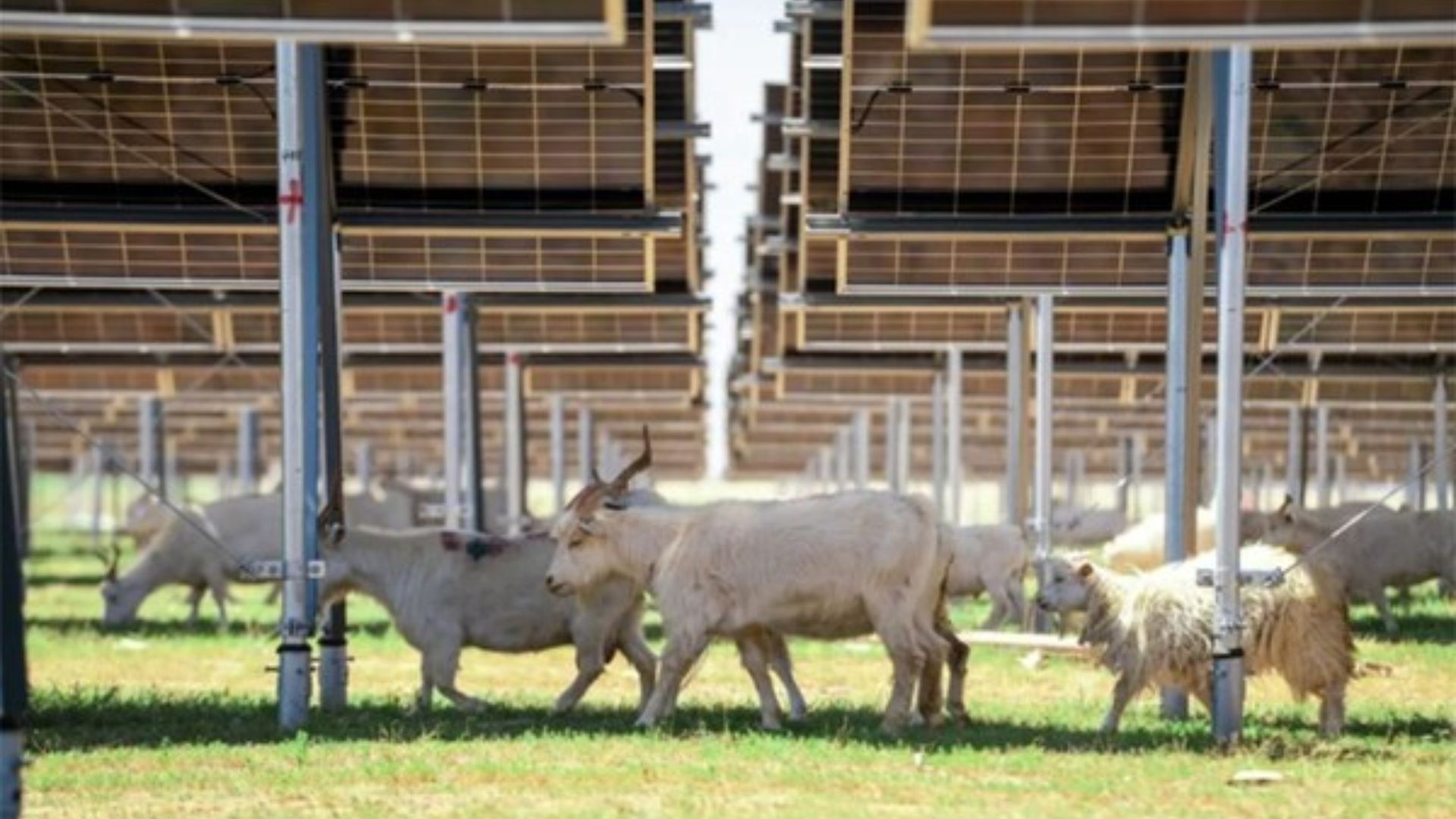China’s 3 GW solar plant with nearly 6,000,000 panels to power millions of homes
November 18, 2024
With nearly 6 million panels, the project will prevent release of 4.7 million tons of CO2 every year.
Updated: Nov 18, 2024 07:59 AM EST
Aerial view of the Mengxi Blue Ocean Photovoltaic Power Station in Gobi Desert.
Once a coal mining site, the Otog Front Banner, Ordos in Inner Mongolia is now home to the Mengxi Blue Ocean Photovoltaic Power Station, China’s largest single-capacity solar power plant.
The facility is designed to generate 5.7 billion kilowatt-hours (kWh) of electricity every year, sufficient to power two million households. It was brought online earlier this month, a press release said.
The increasing demand for clean energy and China’s aim to reach net zero emissions by 2060 have increased renewable energy installations in the Asian country.
However, large-capacity solar power plants require large tracts of land, which is difficult to achieve in densely populated regions with high electricity demand.
Mengxi Blue Ocean Photovoltaic Power Station
China aims to solve this with the West-East Power Transmission and Western Development initiative by setting up renewable energy projects in sparsely populated western regions.
As part of this initiative, it has now converted a former coal mining site into its largest single-capacity solar power plant.
The Mengxi Blue Ocean Photovoltaic Power Station covers an area of 7,000 hectares (70 sq km) and is home to more than 5.9 million solar panels.
By bringing this project online, China estimates that it will stop burning 1.71 million tons of coal every year and reduce its carbon emissions by 4.7 million tons. To achieve the same reduction in emissions, it would have to plant trees covering an area of 62,700 hectares (627 sq km).
The total project investment is RMB12 billion ($1.65 billion).
More than just a solar power plant
The Mengxi Blue Ocean Photovoltaic Power Station is also special because it hosts the first large-scale outdoor solar testing base in the Gobi desert, helping China gather more data on setting up solar power plants in challenging environments.

According to CHN Energy, the project has also used a new rare earth alloy for grounding materials, helping it cut costs by over 40 percent. The large size of the project is also designed to double as a grazing facility for Australian white sheep and chickens, and sand-fixing plants and forage have been planted below the solar panels.
To minimize the impact on the grassland, the project uses steel foundations for the panels instead of conventional concrete. This enabled the team to reduce the pile diameter from 400 mm (precast concrete) to 100 mm, a press release added.
RECOMMENDED ARTICLES
The project also achieved a global first by using an integrated design for module-tracker connections. The module’s four sides were fastened and connected to an innovatively designed installation grove to form an integrated module structure. Compared to traditional modules, this saves RMB0.01/ Wp (watt peak), which might seem little but can deliver considerable savings when building a 3 GW plant.
The facility also uses artificial intelligence (AI) powered solar tracking technology from Arctech for real-time shading avoidance and achieving an energy boost of eight percent, another press release added.
Additionally, it also tailored the post height to maximize space available below the panels so that animals can graze and crops can be cultivated, thereby delivering on the ecological objectives of the project as well.
The Blueprint Daily
Stay up-to-date on engineering, tech, space, and science news with The Blueprint.
By clicking sign up, you confirm that you accept this site’s Terms of Use and Privacy Policy
ABOUT THE EDITOR
Ameya Paleja Ameya is a science writer based in Hyderabad, India. A Molecular Biologist at heart, he traded the micropipette to write about science during the pandemic and does not want to go back. He likes to write about genetics, microbes, technology, and public policy.
POPULAR ARTICLES
RELATED ARTICLES
Search
RECENT PRESS RELEASES
TNT Sports, Amazon reveal 2025 NASCAR broadcasters alongside Dale Earnhardt Jr.
SWI Editorial Staff2024-11-18T10:56:22-08:00November 18, 2024|
TNT to keep NBA rights in settlement deal — but with a major twist
SWI Editorial Staff2024-11-18T10:56:21-08:00November 18, 2024|
‘Red One’ made $34 million on a $250 million budget in its first weekend. That sounds bad — but Amazon MGM never planned to make its profit in theaters.
SWI Editorial Staff2024-11-18T10:56:19-08:00November 18, 2024|
ESPN’s ‘Inside the NBA’ Deal is Latest to Snatch Top Sports Ideas From Rivals
SWI Editorial Staff2024-11-18T10:56:18-08:00November 18, 2024|
Adam Alexander, Steve Letarte Join Dale Jr. in TNT, Prime Booths for 2025
SWI Editorial Staff2024-11-18T10:56:16-08:00November 18, 2024|
Bitcoin Buyer Spree: MicroStrategy Acquires $4.6B In BTC; Metaplanet Issues $11.4M In Bonds To Fund Purchases
SWI Editorial Staff2024-11-18T10:54:56-08:00November 18, 2024|




